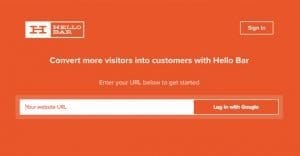3 Surefire Ways to Increase Your Traffic with Hashtags

Hashtags were more or less invented in 2007, when Chris Messina, a Google Designer, thought about creating them as a way to indicate groups and topics for discussion. If you wanted to talk about a particular event, you might use #EventName and your message in a tweet. Back then, Twitter didn’t create links out of tags. Many people criticized the idea, mostly due to not knowing how it would work. After all, there was no functionality for it.
Today, of course, hashtags are everywhere. They’re a staple of Twitter along with retweets and @mentions, and they’re virtually required for success on Instagram. Using them properly is the key to success on social media today. History was made when Summize, a search engine acquired by Twitter, linked tags. The rest fell into place from there.
Hashtags come in two flavors; branded and unbranded. Unbranded hashtags tend to be insanely popular, when they’re common terms. Just imagine how many people are throwing their pictures into the #cute tag or the #selfies tag or the #cats tag. You can’t really use these for marketing, because the people who use them for conversation and communication view it as an intrusion. It’s much like if you saw two people on the side of the street having a private conversation, and you approached them to talk about their views on Jesus.
Branded hashtags, meanwhile, are tags that are relevant only to your company and to your marketing. You’re much more freely able to use them for advertising, because that’s basically their entire purpose. If your company is named Example, and you’re having a contest, you could do all the marketing you want in the #ExampleContest tag and no one would bat an eye.
Branded hashtags are also great for user communication. If you have that #ExampleContest going, and your users have some comments about it, you might see “Hey @Example, here are my thoughts about #ExampleContest!” You’ll see people posting links to blog posts where they mention your tag, and so forth.
Make sure you look at your tags from every perspective before you put them to use. For one thing, you need to make sure you’re not accidentally stepping on another brand’s toes or co-opting a branded tag from a while ago. You also need to make sure you don’t have any awkward word joins. Pen Island might want to rephrase their name before using #penisland, for example.
Branded tags are great, but they aren’t where everyone hangs out. They’re like a little room off the side hall that’s dedicated to you. It’s cool to be able to speak freely about your company and your marketing there, but it’s going to have a much smaller audience than what you get in the unbranded tags.
The key to using unbranded tags is to keep your content as generic as possible. Don’t go in trying to market; go in trying to help. Be a provider of information. Be a resource. Don’t be a shill.
It’s easiest for some brands to make use of the graphical hashtags when promoting themselves casually. For example, a brand focusing on hiking gear can post pictures of people hiking or scenic destinations for hiking, which may include their products. There’s no branded message, there’s no call to action, there’s just a cool shot that shows the brand is in touch with their users.
Tip #3: Select the Right Platform
Hashtags work on a lot of sites, and they don’t work on others. For example, the hashtags I’ve made up on this blog don’t filter you to a search for other posts using them. On some sites, they will.
Obviously, Twitter, Instagram and Facebook all implement hashtags. Twitter was the progenitor. Instagram uses them as tags for images and does very, very well with them. On Facebook, however, the use of hashtags will actually hurt your reach.
What other sites use hashtags?
- Gawker media’s blog network uses hashtags, but unless you’re using them for commenting, you won’t be getting much benefit here beyond maybe research purposes.
- Google+ uses hashtags, so if you’re active on that platform, they can be very useful.
- Tumblr uses hashtags, though they aren’t part of the post itself, they’re in a tags section beneath. Some people specifically use them for categories, while others just use them as additional sub-dialogue in comments. Often both are true.
- Pinterest is much like Instagram and puts hashtags to use in a similar way.
Facebook is the big warning, here. Other sites, use tags or don’t, and test how they work if you do. Facebook stay away from them. Twitter, Instagram and the like, definitely use them.
Hashtag abuse comes in many forms and can be detrimental to both your marketing efforts and to the patience and attention of your users. Avoid these sorts of mistakes:
- Not using hashtags on a tag-centric platform like Twitter is a cardinal sin.
- Using too many hashtags is annoying and adds nothing. Two tags is fine. Three even works. Track Maven performed a study and found that 5 was the ideal number for fortune 500 brands, though they have to be used carefully so as not to overrun the main message. Again, it comes down to platform. 5 is ideal on Instagram; 2 is probably pushing it on Twitter, where space is limited.
- Don’t abuse hashtags to gain followers. The #LikeForLike and #FollowForFollow tags are artificial growth methods and can hurt your reputation in the long run.
- Don’t abuse current events hashtags. DiGiorno tried to add their marketing message to a tag called #WhyIStayed. Their tweet was simple and well-intention; I stayed because there was pizza! Sounds great, right? Too bad for them, the #WhyIStayed tag was primarily used for abuse victims to explain why they didn’t leave their abusers. The marketing intrusion was an obscene faux pas and hurt the brand significantly.
Finally, always give your hashtags a test. Make sure they aren’t being used in a way that doesn’t sync with your prospective use. Make sure you aren’t stepping on any toes. Make sure they work, and make sure people can find them.
 ContentPowered.com
ContentPowered.com




